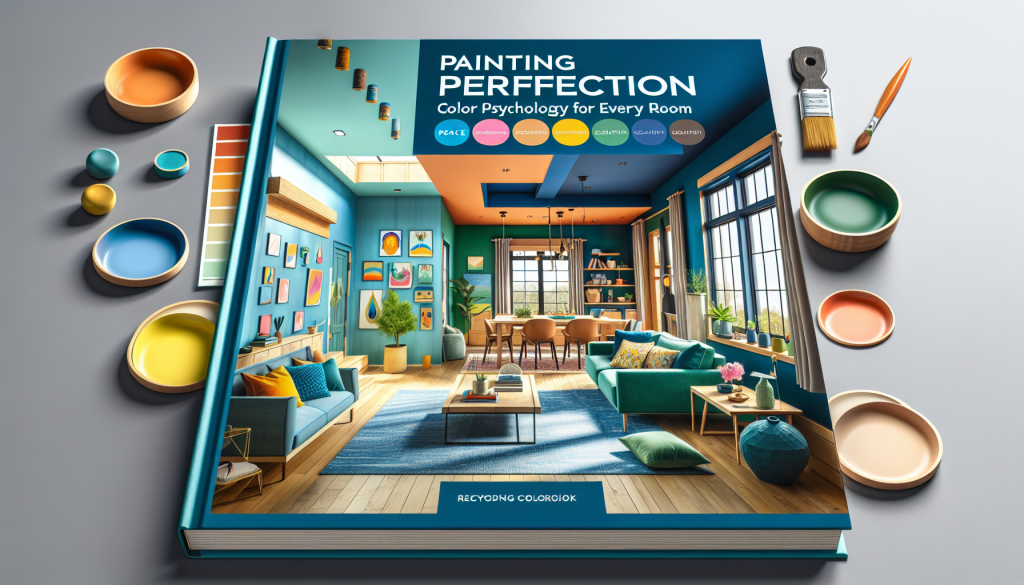
Painting Perfection: Color Psychology for Every Room
Welcome to Painting Perfection: Color Psychology for Every Room
When it comes to decorating your home, painting is one of the most effective and affordable ways to transform a space. Not only does paint add color and texture to the walls, but it also has the power to influence our emotions and moods. This is where color psychology comes into play. By understanding the psychology behind colors, you can create the perfect ambiance in every room of your home. Join us as we delve into the world of color psychology and discover how to achieve painting perfection in every room.
The Power of Color
Colors have a powerful effect on our mind and body. They have the ability to evoke emotions, inspire creativity, and impact our overall well-being. This is why it’s important to choose the right colors for different rooms in your home. While this may seem overwhelming, the good news is that there are certain guidelines you can follow to ensure that your colors align with the purpose and mood of each room.
The Psychology of Common Colors
Let’s start with some of the most common colors used in home decor and their psychological effects:
- Red: This vibrant and bold color is associated with passion, energy, and excitement. It can also stimulate appetite, making it an ideal choice for dining rooms or kitchens.
- Blue: Blue is known for its calming and soothing effects. It is often used in bedrooms and bathrooms to create a sense of tranquility and relaxation.
- Yellow: The color of sunshine and happiness, yellow is perfect for bringing warmth and energy to a space. It is often used in kitchens, hallways, and other areas where you want to create a lively atmosphere.
- Green: Green is associated with nature, balance, and harmony. It can have a calming effect and is often used in bedrooms and living rooms for a sense of peace and serenity.
- Purple: This royal color is often associated with luxury, creativity, and spirituality. It can be used in bedrooms and home offices to promote a sense of creativity and imagination.
- White: White is often seen as a symbol of purity and cleanliness. It can make a room appear spacious, bright, and airy. However, too much white can also create a cold or sterile atmosphere, so be mindful of its use.
- Black: Black is a bold and dramatic color that is often associated with sophistication and luxury. It can add a sense of depth and character to a room when used in moderation.
Choosing Colors for Different Rooms
Now that we have a better understanding of the psychology of colors, let’s explore how to choose the right colors for different rooms in your home:
Bedroom
The bedroom is a space for rest and relaxation, so it’s best to stick with calming and soothing colors. Shades of blue, green, and lavender are ideal for promoting a peaceful atmosphere.
Living Room
The living room is often the heart of the home, where families gather to spend quality time together. Therefore, it’s best to choose warm, inviting colors such as earth tones, shades of red, or a combination of warm and cool colors.
Kitchen
The kitchen is a space where we cook, eat, and socialize. It’s best to choose bright and energetic colors such as yellows, greens, or even reds, as they can stimulate the appetite and create a lively atmosphere.
Bathroom
Bathrooms are often seen as a space for relaxation and self-care. Therefore, it’s best to stick with calming colors such as shades of blue, green, or soft neutrals.
Home Office
For a productive and focused home office, choose colors that promote creativity and inspiration. Shades of purple, green, or yellow can be great options for this space.
Tips for Painting Perfection
Now that you have a better understanding of color psychology, here are some additional tips for achieving painting perfection in every room:
- Consider the lighting in the room. Natural light can change the way colors appear, so be sure to test the colors in different lighting conditions before making a final decision.
- Don’t be afraid to mix and match colors. Different shades of the same color can create a sense of depth and texture in a room.
- Keep in mind the purpose of each room. For example, a home gym may benefit from energetic and motivating colors, while a home spa may benefit from calming and peaceful colors.
- Experiment with different painting techniques such as color blocking or ombre to add interest and uniqueness to a room.
By following these tips and understanding the psychology of colors, you can create the perfect ambiance for each room in your home. So go ahead and unleash your creativity and transform your home into a space that not only looks amazing, but also feels amazing. Happy painting!
In Conclusion
Color psychology is a vital element to consider when painting your home. It not only adds visual appeal, but it can also enhance the mood and atmosphere of any room. By understanding the psychological impacts of different colors, you can create a harmonious and welcoming environment in every room. So the next time you’re planning to paint, keep these tips in mind to achieve painting perfection in every room.
